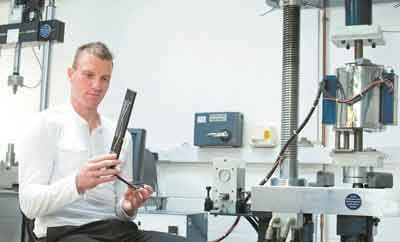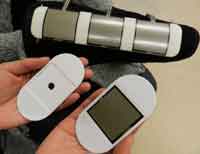A special topic article in the June issue of Plastic and Reconstructive Surgery, the official medical journal of the American Society of Plastic Surgeons, explores recent and emerging approaches to designing prosthetic hands with a sense of touch, according to a news release from Wolters Kluwer Health.
In the article, “Providing a Sense of Touch to Prosthetic Hands,” ASPS Member Surgeon Paul S. Cederna, MD, from the University of Michigan, Ann Arbor, and others write about the recent and emerging technologies to create “sensory interfaces” with the peripheral nerves to provide feeling in hand prostheses and enable more natural, intuitive use of them.
“The lack of sensation…is the key limitation to re-establishing the full functionality of the natural limb,” Cederna and colleagues write. Providing some sense of touch to the artificial hand, they continue in the release, would lessen the “cognitive burden” of relying solely on vision to initiate and monitor movements—while also providing “tremendous psychological benefits” for patients.
Already in use, they write per the release, is a technique called “sensory substitution.” in which one type of sensation—for example, vibration applied to skin on the remaining limb, or to another part of the body—is used to convey touch from sensors on the prosthesis.
In another technique, called “direct neural stimulation,” various types of implanted neural interfaces—electrodes placed in or around the nerves—are stimulated by sensors on the prosthesis, the release explains. This enables patients to feel stiffness, shape, or size, or to control fine-motor movements without visual cues.
A promising newer technique, they write, is “targeted muscle reinnervation,” in which nerves are transferred to provide sensation to intact muscles and overlying skin. Although this technique was originally developed to improve control of the prosthesis, they write, according to the release, approaches to this technique are being studied to elicit sensory feedback from the prosthesis.
The authors note in the release that their lab is currently working on a technique called the “sensory regenerative peripheral nerve interface,” in which a “bioartificial interface” transfers sensory signals directly from a prosthetic sensor to the remaining nerve.
Another “next generation” approach, they write, according to the release, is the use of “optegenetic” technology to control nerve signaling using specific light wavelengths. They say that although this has been only studied in animals so far, it offers a “compelling alternative” to direct electrical stimulation of nerves.
“The ultimate goal is to develop a prosthesis that closely mimics the natural limb, both in its ability to perform complex motor commands and to elicit conscious sensation,” Cederna and colleagues write, per the release.
Although the authors say in the article that many challenges remain to be met, the release notes, they believe that these newer techniques “represent the wave of the future, paving the way to more intuitive prosthetic control through sensory feedback.
[Source(s): Wolters Kluwer Health, EurekAlert]





